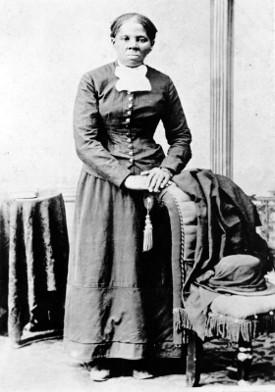
Photograph by H. B. Lindsley via Library of Congress
When Harriet Tubman died in in March of 1913, the U.S. $20 bill bore George Washington’s portrait and the inscription “This certifies that there have been deposited in the treasury of the United States of America $20 in gold coin payable to the bearer on demand.”
Later that year, Congress passed and President Woodrow Wilson signed the Federal Reserve Act. The following year, the Federal Reserve issued a new $20 bill, adorned with the portrait of Grover Cleveland. In 1928, the first $20 bill bearing the visage of Andrew Jackson appeared. Even though the Federal Reserve had taken over the creation of “money” (loosely defined) from the U.S. Treasury, the note still promised that it could be redeemed for gold at the U.S. Treasury, or gold or “lawful money” at any Federal Reserve Bank.
Nearly 90 years later, as the Treasury announces that Tubman’s likeness will grace the next $20 bill, Federal Reserve Notes are just paper, no longer redeemable in gold and sustained only by the faith of buyers and sellers in a government nearly $20 trillion of its own debased dollars in actual debt – and even deeper in the hole when unfunded promises of future spending are taken into account.
Due to a cumulative inflation rate of more than 2,300 percent since 1913, a $20 bill today will buy goods valued at 83 cents in 1913 currency.
That differential represents something that Tubman spent her whole life fighting. I wonder how one of slavery’s greatest opponents would feel about having her image appropriated for use on the symbol of its resurgence – an instrument of debt representing the promises of politicians to hold their subjects in perpetual bondage while taking the payments out of our hides.
Tubman was no stranger to financial swindles like the Fed’s disappearing-gold scheme. In 1873, she fell victim to a private-sector cash-for-gold con that ended with her knocked out, robbed, tied up, and left penniless in the woods. I doubt she’d have fallen for the Federal Reserve scam.
In recent years, a few scattered politicians – most notably former U.S. Representative Ron Paul (R-Texas), his son U.S. Senator Rand Paul (R-Kentucky), and U.S. Senator Bernie Sanders (I-Vermont) – have sponsored or supported legislation demanding an audit of the Federal Reserve System. Laudable, I guess – especially in the case of Sanders, who broke with the Democratic Party to support the latest version of the bill even as he ramped up his Democratic presidential campaign – but a little short of what Harriet Tubman might have expected.
Auditing the Fed isn’t enough. Like Tubman said: “Never wound a snake; kill it.” Bitcoin and other crypto-currencies are the 21st Century’s version of the Underground Railroad. If the U.S. government won’t kill the Federal Reserve, free markets will.
Thomas L. Knapp (Twitter: @thomaslknapp) is director and senior news analyst at the William Lloyd Garrison Center for Libertarian Advocacy Journalism (TheGarrisonCenter.org), where this commentary originally appeared.








